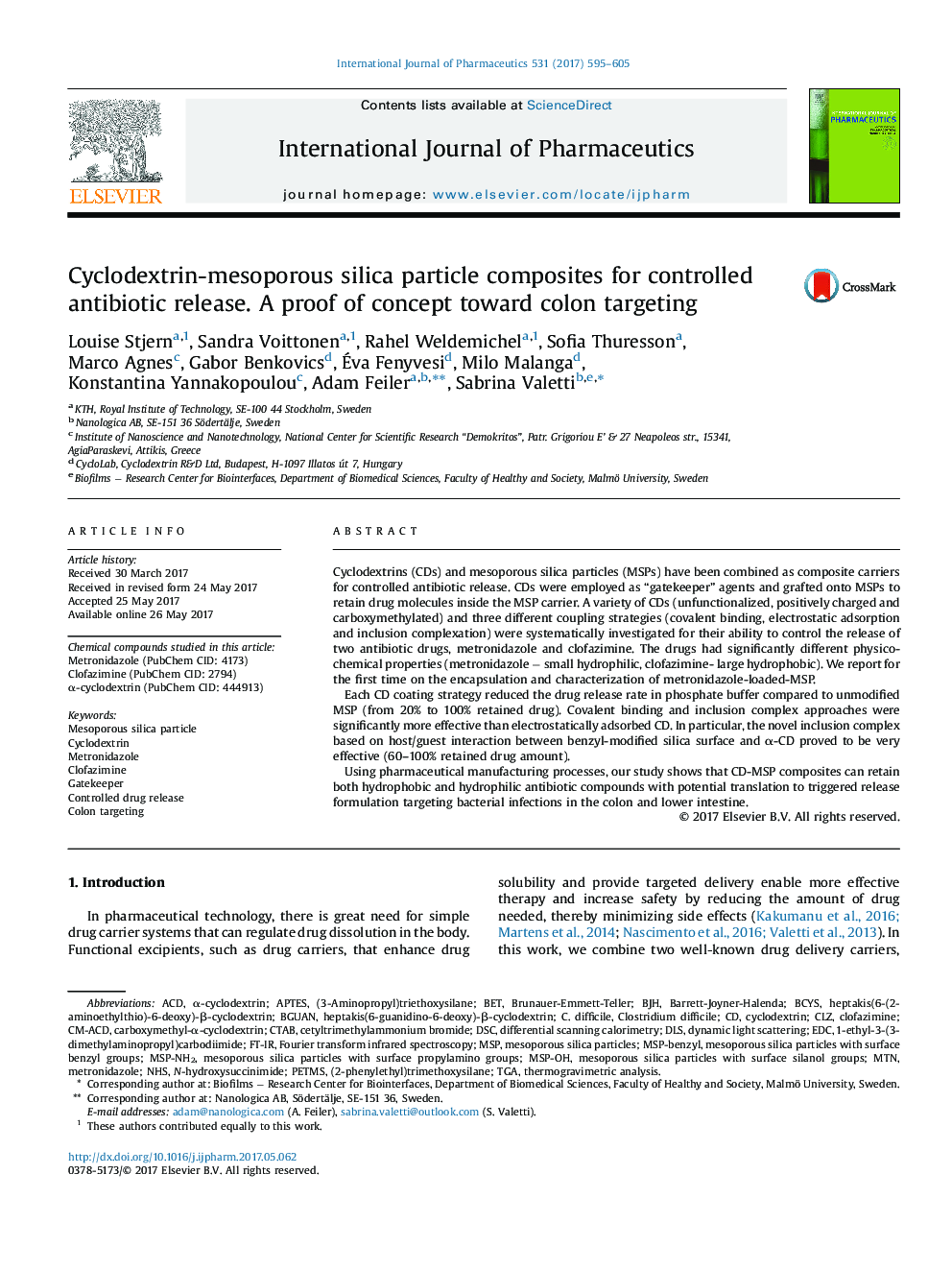| Article ID | Journal | Published Year | Pages | File Type |
|---|---|---|---|---|
| 5550086 | International Journal of Pharmaceutics | 2017 | 11 Pages |
Cyclodextrins (CDs) and mesoporous silica particles (MSPs) have been combined as composite carriers for controlled antibiotic release. CDs were employed as “gatekeeper” agents and grafted onto MSPs to retain drug molecules inside the MSP carrier. A variety of CDs (unfunctionalized, positively charged and carboxymethylated) and three different coupling strategies (covalent binding, electrostatic adsorption and inclusion complexation) were systematically investigated for their ability to control the release of two antibiotic drugs, metronidazole and clofazimine. The drugs had significantly different physicochemical properties (metronidazole â small hydrophilic, clofazimine- large hydrophobic). We report for the first time on the encapsulation and characterization of metronidazole-loaded-MSP.Each CD coating strategy reduced the drug release rate in phosphate buffer compared to unmodified MSP (from 20% to 100% retained drug). Covalent binding and inclusion complex approaches were significantly more effective than electrostatically adsorbed CD. In particular, the novel inclusion complex based on host/guest interaction between benzyl-modified silica surface and α-CD proved to be very effective (60-100% retained drug amount).Using pharmaceutical manufacturing processes, our study shows that CD-MSP composites can retain both hydrophobic and hydrophilic antibiotic compounds with potential translation to triggered release formulation targeting bacterial infections in the colon and lower intestine.
Graphical abstractDownload high-res image (215KB)Download full-size image
